Here’s the scenario: You look out the window and realize it’s time for a good cleaning. But before you grab the Windex and start wiping away, there are some important do’s and don’ts to keep in mind. From avoiding streaks to using the right tools, we’ve got the inside scoop on how to achieve crystal-clear windows without any hassle. So sit back, relax, and let us guide you through the dos and don’ts of window cleaning.
Table of Contents
- Choose the Right Time of Day to Avoid Streaks
- Pick the Proper Tools for a Streak-Free Shine
- Use Distilled Water for a Spotless Finish
- Implement a Top-Down Approach to Cleaning
- Opt for Eco-Friendly Cleaners to Protect Your Health
- Never Use Abrasive Materials on Glass Surfaces
- Dry Edges with a Microfiber Cloth to Prevent Marks
- Avoid Cleaning in Direct Sunlight to Minimize Drying Time
- Create a DIY Solution for an Effective Homemade Alternative
- Employ the S-Technique for Streak-Free Results
- Tackle High Windows with the Proper Tools
- Know When to Use a Squeegee
- The Safe Way to Clean Window Frames
- Dealing with Stubborn Stains and Spots
- Regular Maintenance Beats Intensive Scrubbing
- Questions & Answers for The Do’s and Don’ts of Window Cleaning.
- The Way Forward
Choose the Right Time of Day to Avoid Streaks
When it comes to window cleaning, one of the most important factors to consider is the time of day you choose to do it. Cleaning your windows at the wrong time can result in unsightly streaks that are difficult to remove.
To avoid this, follow these tips for choosing the right time of day to clean your windows:
- Clean your windows on a cloudy day: Cleaning your windows on a hot, sunny day can cause the cleaning solution to dry too quickly, leaving behind streaks. Instead, choose a cloudy day when the temperature is mild.
- Avoid cleaning in direct sunlight: If you must clean your windows on a sunny day, do it either early in the morning or late in the afternoon when the sun is not shining directly on the windows.
- Choose a time when there is little wind: Wind can cause the cleaning solution to dry too quickly and leave streaks, so try to clean your windows on a calm, still day.
By choosing the right time of day to clean your windows, you can ensure a streak-free finish that will leave your windows looking sparkling clean.
Remember, window cleaning tips are not just about technique, but also about timing. By following these simple guidelines, you can achieve professional results without the need for professional help. So, the next time you’re wondering how to clean windows without streaks, remember that choosing the right time of day is just as important as using the right cleaning solution and technique.
Pick the Proper Tools for a Streak-Free Shine
When it comes to achieving a streak-free shine on your windows, having the right tools is essential. Here are some do’s and don’ts of window cleaning to ensure you pick the proper tools for the job:
Do’s:
- Invest in a high-quality squeegee with a rubber blade. This will help to remove water and dirt from the window without leaving streaks behind.
- Use a soft, lint-free cloth to wipe down the edges and corners of the window for a polished finish.
- Consider using a window cleaning solution that is specifically designed for streak-free results. Look for products that are ammonia-free and safe for use on all types of windows.
Don’ts:
- Avoid using paper towels or newspapers to clean your windows, as these can leave behind lint and residue.
- Stay away from abrasive scrubbers or brushes, as these can scratch the glass and create streaks.
- Don’t use harsh chemicals or ammonia-based cleaners, as these can leave streaks and damage the window frame.
When it comes to picking the proper tools for a streak-free shine, it’s important to consider the pros and cons of each option. While a squeegee and cloth may require a bit more effort, they provide a more effective and streak-free result.
On the other hand, using paper towels or harsh chemicals may seem easier, but they can result in a less-than-perfect finish. Ultimately, investing in the right tools and products for window cleaning tips is worth it for a streak-free shine that will leave your windows looking crystal clear.
By following these do’s and don’ts of window cleaning, you can ensure that you pick the proper tools for a streak-free shine every time. Whether you’re cleaning the windows at home or at your place of business, choosing the right tools and products will make all the difference in achieving a professional-looking result.
Use Distilled Water for a Spotless Finish
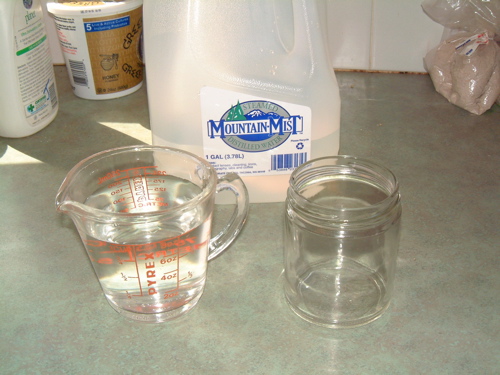
When it comes to achieving a streak-free, spotless finish on your windows, using distilled water is a game changer. Unlike tap water, which can contain minerals and impurities that can leave behind residue and streaks, distilled water is pure and free of contaminants. This makes it the ideal choice for achieving crystal-clear windows that sparkle in the sunlight.
Using distilled water for window cleaning offers several benefits, including:
- Prevents streaks and spots
- Leaves no residue behind
- Safe for use on all types of windows
- Environmentally friendly
In addition to using distilled water, it’s important to use the right tools and techniques for optimal results. Start by applying a window cleaning solution using a squeegee, then follow up by using a microfiber cloth dampened with distilled water to wipe away any remaining streaks or spots. This simple yet effective method will leave your windows looking crystal clear.
While using distilled water for window cleaning offers numerous benefits, it’s important to note that it can be more costly than using tap water. However, the results speak for themselves, as the spotless finish achieved with distilled water is well worth the investment. Additionally, using distilled water helps to prolong the life of your windows by preventing mineral buildup, making it a worthy long-term investment for keeping your home looking its best.
Incorporating distilled water into your window cleaning routine is a simple yet effective way to achieve a spotless finish that will leave your windows gleaming. Whether you’re tackling indoor or outdoor windows, this method is sure to elevate the cleanliness and appearance of your home. Embrace the power of distilled water for an effortless, streak-free shine that will wow anyone who sets their sights on your perfectly clean windows.
Implement a Top-Down Approach to Cleaning
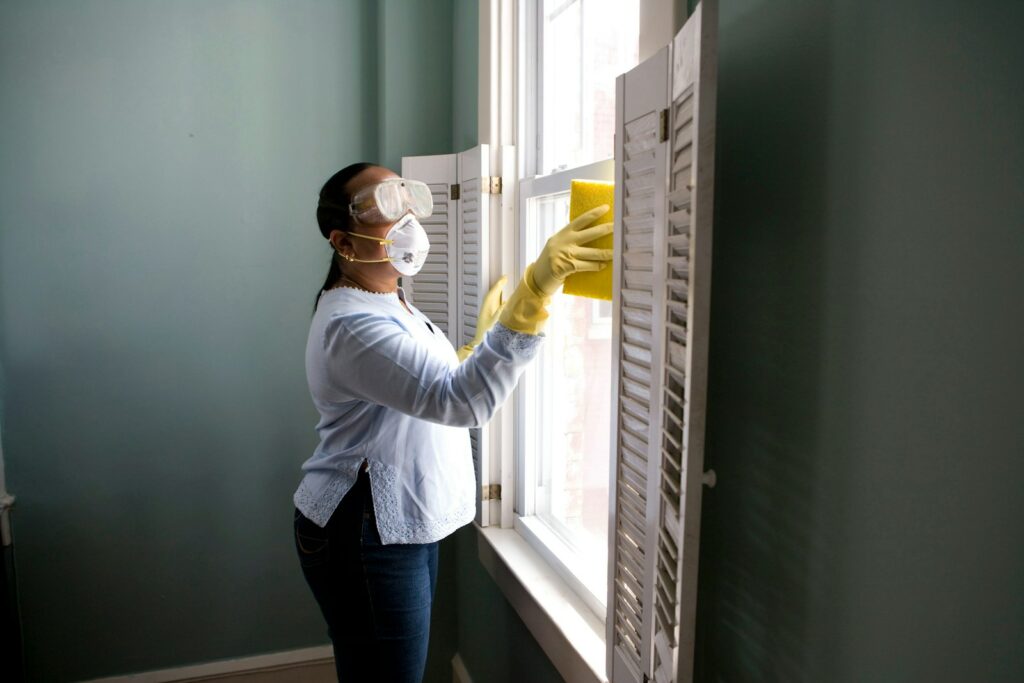
When it comes to window cleaning, it’s important to implement a top-down approach to ensure a thorough and efficient cleaning process. This method involves starting at the top of the window and working your way down to the bottom, allowing the cleaning solution to drip down and effectively remove dirt and grime along the way.
Here are some do’s and don’ts to keep in mind when implementing a top-down approach to cleaning your windows.
Do’s:
- Start by dusting off any debris or cobwebs from the top of the window frame using a duster or microfiber cloth.
- Apply a window cleaning solution to the top of the window and allow it to drip down, loosening any dirt or grime.
- Use a squeegee to remove the cleaning solution, starting at the top and working your way down in a smooth, continuous motion.
- Finish by wiping the edges and frame of the window with a clean, dry cloth to remove any remaining solution and leave the window streak-free.
Don’ts:
- Don’t start cleaning from the bottom of the window, as this can cause streaks and drips as you work your way up.
- Avoid using harsh chemicals or abrasive materials that can damage the glass or frame of the window.
- Don’t use a circular motion when cleaning with a squeegee, as this can cause streaks and uneven cleaning.
- Avoid using a dirty or wet cloth to wipe down the window, as this can leave behind streaks and additional dirt.
By following these do’s and don’ts, you can ensure that your window cleaning process is effective and leaves your windows looking sparkling clean. Remember to take your time and be thorough in your cleaning process to achieve the best results.
Opt for Eco-Friendly Cleaners to Protect Your Health
When it comes to keeping your windows clean and sparkling, it’s important to consider the impact of the products you use on both the environment and your health. Opting for eco-friendly cleaners is not only a great way to reduce your carbon footprint, but also to protect your family from harmful chemicals. Here are some do’s and don’ts of window cleaning to help you make the switch to eco-friendly options.
Do’s:
- Choose eco-friendly cleaning products that are free from harsh chemicals and toxins.
- Look for natural ingredients such as vinegar, lemon, and baking soda that effectively clean windows without harming the environment.
- Invest in reusable, washable microfiber cloths and squeegees to minimize waste and avoid disposable paper towels.
- Open windows and ventilate the area while cleaning to reduce exposure to indoor air pollutants.
Don’ts:
- Avoid using ammonia-based or bleach-based cleaners, as they can release harmful fumes and negatively impact indoor air quality.
- Avoid disposable wipes and paper towels, as they contribute to unnecessary waste and environmental pollution.
- Avoid using aerosol sprays, as they contain harmful propellants and can negatively impact the ozone layer.
When it comes to window cleaning, making the switch to eco-friendly options is a simple and effective way to protect the environment and your health. By following these do’s and don’ts, you can ensure that your windows are clean and clear without compromising on your commitment to sustainability and well-being.
Never Use Abrasive Materials on Glass Surfaces

When it comes to window cleaning, it’s important to remember that glass surfaces are delicate and can easily be damaged if not treated properly. One of the most important things to keep in mind is to never use abrasive materials when cleaning your windows. Abrasive materials, such as steel wool or harsh scrubbing pads, can scratch and etch the glass, leaving behind permanent damage that is both unsightly and costly to repair.
Instead, opt for gentle cleaning methods that are safe for your windows and the environment. Here are some alternatives to abrasive materials:
- Microfiber cloths: These soft, non-abrasive cloths are perfect for gently wiping away dirt and grime without scratching the glass surface.
- Vinegar and water solution: Create a natural cleaning solution using equal parts of vinegar and water. This will effectively clean your windows without causing any damage.
- Wet newspaper: Surprisingly, damp newspaper can be a great alternative to paper towels, leaving your windows streak-free and sparkling.
By following these simple tips and avoiding abrasive materials, you can ensure that your windows remain clean and damage-free for years to come.
Dry Edges with a Microfiber Cloth to Prevent Marks
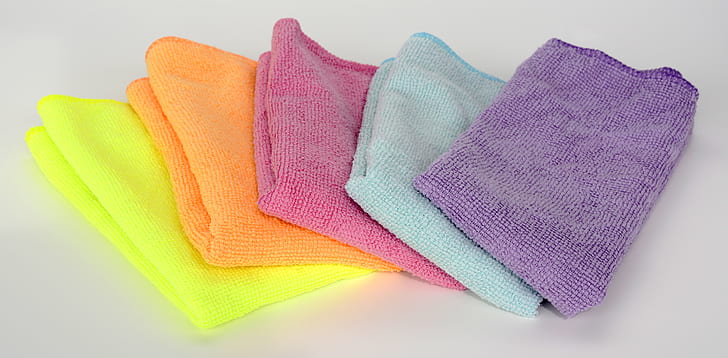
After washing your windows with a cleaning solution, it’s crucial to dry the edges with a microfiber cloth to prevent any marks or streaks from forming. Microfiber cloths are highly effective at absorbing moisture and dirt, leaving your windows sparkling clean without any residue.
Using a gentle, circular motion, carefully dry the edges of the window with the microfiber cloth. Be sure to use a clean section of the cloth for each window to avoid transferring any dirt or grime from one surface to another. This will help prevent any potential smudging and ensure a streak-free finish.
Window Cleaning Tips:
- Choose a high-quality microfiber cloth for the best results.
- Make sure to dry the edges of the window immediately after washing to prevent any water spots from forming.
- For stubborn marks, use a separate dry microfiber cloth to gently buff the area until it is completely clean.
By incorporating this step into your window cleaning routine, you can achieve a professional-looking finish without the need for harsh chemicals or excessive effort. Keep in mind that regular maintenance is key to keeping your windows looking their best, so make sure to add this practice to your regular cleaning regimen.
Here are more additional do’s and don’ts of using microfiber cloths for window cleaning:
Do’s:
- Use a damp microfiber cloth to wipe down the entire window surface, starting from the top and working your way down.
- Make sure to use a clean microfiber cloth for each window to avoid spreading dirt and grime from one window to another.
- Wash the microfiber cloths separately from other laundry items to maintain their effectiveness.
Don’ts:
- Avoid using fabric softener or dryer sheets when washing microfiber cloths, as these can leave a residue that reduces their cleaning power.
- Never use bleach or fabric softener on microfiber cloths, as they can damage the delicate fibers.
- Avoid using the same microfiber cloth for both cleaning windows and other household tasks, as this can transfer chemicals and residue onto the windows.
Embracing the power of microfiber cloths for window cleaning can make the process much easier and more environmentally friendly. By following these do’s and don’ts, you can ensure that your windows are gleaming without the need for harsh chemicals or wasteful paper towels.
Avoid Cleaning in Direct Sunlight to Minimize Drying Time
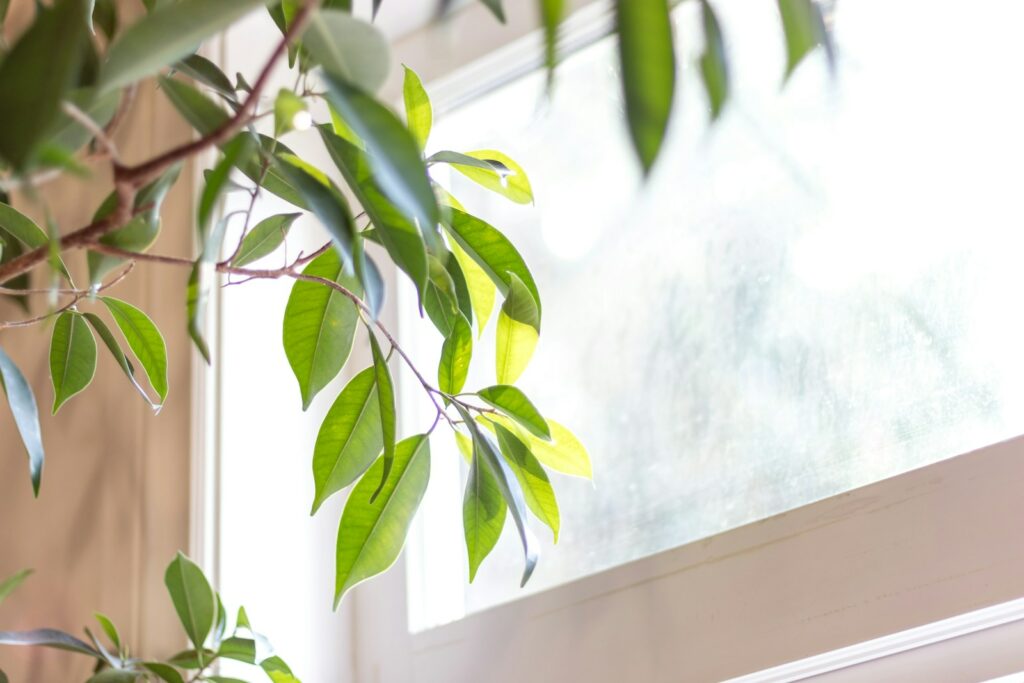
When it comes to window cleaning, one of the most common mistakes people make is trying to clean their windows in direct sunlight. While it may seem like a good idea to take advantage of the natural light, cleaning your windows in direct sunlight can actually make the process more difficult and time-consuming.
Here’s why you should avoid it and what you can do instead.
The Problem with Cleaning in Direct Sunlight
Cleaning your windows in direct sunlight can cause the cleaning solution to dry too quickly, leaving streaks and smudges on the glass. Additionally, the heat from the sun can cause the cleaning solution to evaporate faster, making it harder to wipe away dirt and grime. This can result in a frustrating and ineffective cleaning process, leaving your windows looking worse than before.
What to Do Instead
To avoid the frustration of cleaning your windows in direct sunlight, try these tips:
- Choose a time of day when the sun is not directly shining on your windows, such as early morning or late afternoon.
- Work in sections, so you can wipe away the cleaning solution before it has a chance to dry.
- If you must clean your windows in direct sunlight, consider using a professional-grade squeegee to quickly remove the cleaning solution before it dries.
Summary
By avoiding cleaning your windows in direct sunlight, you can minimize drying time and achieve a streak-free, sparkling finish. Remember to choose the right time of day, work in sections, and use the right tools to make the window cleaning process as smooth and effective as possible.
Create a DIY Solution for an Effective Homemade Alternative
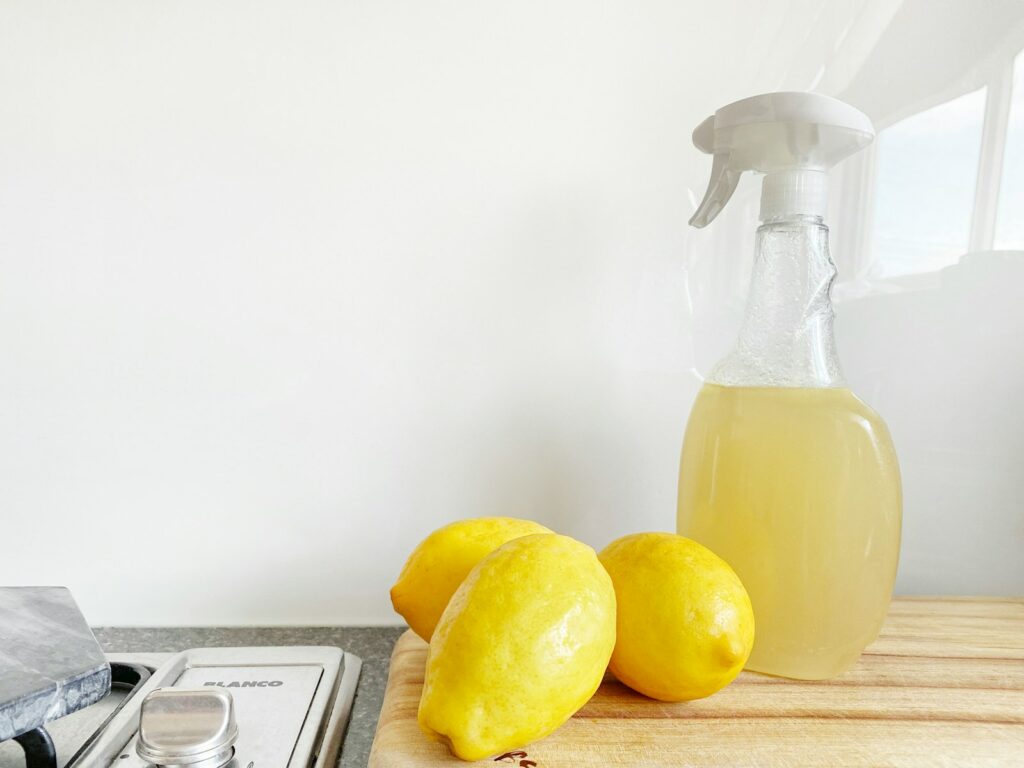
Creating a DIY solution for an effective homemade alternative to commercial window cleaners is not only cost-effective, but it can also be a fun and rewarding project. By using household ingredients, you can create a natural and environmentally friendly alternative that is safe for you, your family, and the environment.
Do’s:
- Use a mixture of white vinegar and water for a streak-free shine. Simply mix one part vinegar with two parts water in a spray bottle and use a microfiber cloth to wipe down your windows.
- Adding a few drops of essential oil, such as lemon or peppermint, to your homemade cleaner can leave your windows smelling fresh and clean.
- Use a squeegee to remove excess water and prevent streaking. Start from the top and work your way down in a zig-zag motion for best results.
- Clean your windows on a cloudy day or in the evening to prevent the cleaner from drying too quickly and leaving streaks.
Don’ts:
- Avoid using paper towels or regular cloths, as they can leave behind lint and streaks.
- Do not use harsh chemicals or ammonia-based cleaners, as they can be harmful to your health and the environment.
- Never clean your windows in direct sunlight, as the cleaner can dry too quickly and leave streaks behind.
Remember, with a little creativity and some basic household items, you can to traditional window cleaning products. It’s a great way to save money and reduce your environmental impact while achieving sparkling, clean windows.
Employ the S-Technique for Streak-Free Results
When it comes to achieving streak-free results while cleaning your windows, employing the S-Technique is essential. This method ensures that you cover every inch of the glass surface, leaving it spotless and sparkling.
Here are the do’s and don’ts of using the S-Technique for window cleaning:
Do’s:
- Start by cleaning the top of the window and work your way down in an S-shaped motion.
- Use a high-quality window cleaning solution to effectively remove dirt and grime.
- Invest in a good quality squeegee to ensure a streak-free finish.
- Wipe the squeegee blade after each stroke to prevent streaks and residue.
Don’ts:
- Avoid using newspaper or paper towels, as they can leave behind lint and streaks.
- Avoid cleaning windows in direct sunlight, as the heat can cause the cleaning solution to dry too quickly, leaving streaks behind.
- Avoid using abrasive materials such as steel wool or harsh chemicals, as they can damage the glass surface.
- Avoid over-wetting the windows, as excessive moisture can lead to streaks and water marks.
By following these do’s and don’ts, you can master the S-Technique and achieve streak-free results every time you clean your windows.
Tackle High Windows with the Proper Tools

Cleaning high windows can be a daunting task, but with the proper tools and techniques, it can be a breeze.
Here are some do’s and don’ts to keep in mind when tackling those hard-to-reach windows:
Do’s
- Invest in a quality squeegee: A good squeegee can make all the difference when it comes to streak-free windows. Look for one with a rubber blade and a sturdy handle.
- Use a ladder or extension pole: For windows that are out of reach, a ladder or extension pole can help you safely access and clean them.
- Use a solution of water and vinegar: A simple solution of water and vinegar is an effective and environmentally friendly way to clean high windows.
- Work from top to bottom: Start at the top of the window and work your way down to avoid streaks and drips.
Don’ts
- Don’t use paper towels: Paper towels can leave behind lint and streaks, making your windows look less than perfect.
- Avoid using harsh chemicals: Harsh chemicals can be damaging to your windows and harmful to the environment. Stick to natural cleaning solutions.
- Don’t forget about safety: Always make sure you have a sturdy ladder or extension pole, and never attempt to clean high windows without the proper tools and safety precautions.
- Avoid cleaning in direct sunlight: Cleaning windows in direct sunlight can cause streaks to form as the cleaning solution dries too quickly. Aim to clean your windows on a cloudy day or in the early morning or evening.
Know When to Use a Squeegee
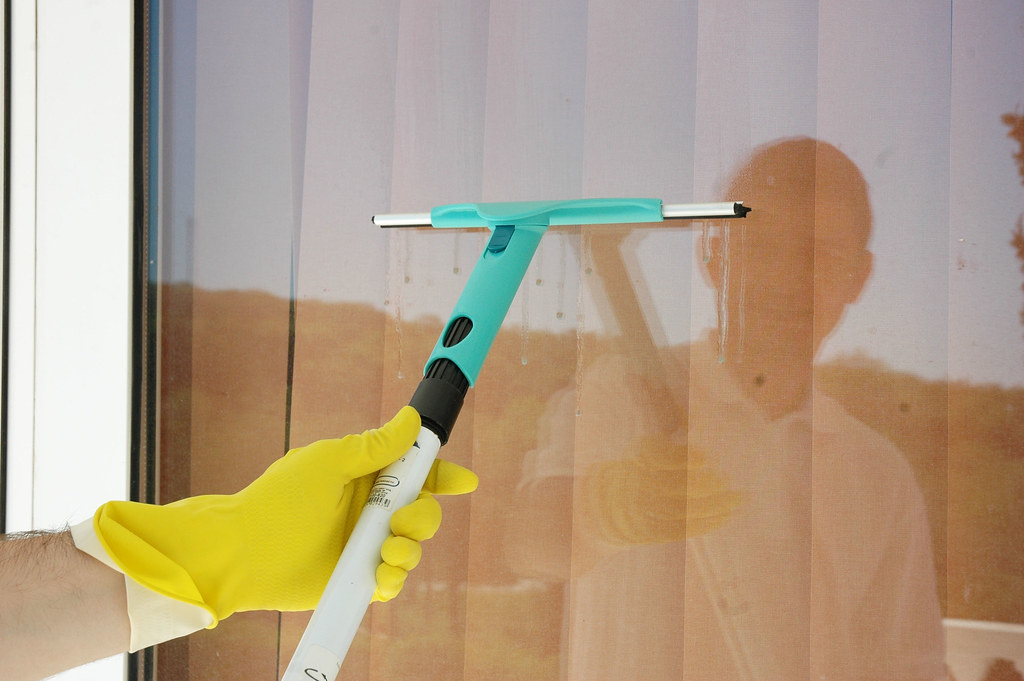
Using a squeegee can be a game-changer when it comes to window cleaning, but it’s important to know when and how to use it for the best results. Here are some tips and guidelines:
Do’s:
- Use a squeegee on large, flat windows to remove excess water and prevent streaks.
- Choose a squeegee with a rubber blade and a sturdy handle for better control and effectiveness.
- Start from the top and work your way down in a reverse S-pattern to ensure all water is removed.
- Clean the squeegee blade with a damp cloth after each pass to prevent dirt from being spread around.
- Apply light pressure on the squeegee to avoid leaving marks on the glass.
Don’ts:
- Avoid using a squeegee on small, intricate windows as it may not be as effective and could leave behind streaks.
- Avoid using a squeegee on dry glass, as it can cause scratching and damage.
- Avoid using a squeegee without a proper cleaning solution, as it may not provide the desired results.
- Avoid using a squeegee with a worn-out or damaged blade, as it can leave streaks and marks on the glass.
Knowing when and how to use a squeegee is key to achieving sparkling clean windows. By following these do’s and don’ts, you can ensure a smooth and streak-free window cleaning experience every time.
The Safe Way to Clean Window Frames

Cleaning your window frames is an essential part of maintaining the overall cleanliness and appearance of your windows. However, it’s important to do so in a way that is safe for both you and the environment. Here are some do’s and don’ts of cleaning your window frames to ensure that you get the job done effectively and safely.
Do’s
- Use a gentle cleaner: When cleaning your window frames, opt for a mild, non-abrasive cleaner that is safe for the material of your frames.
- Wipe with a soft cloth: After applying the cleaner, use a soft, lint-free cloth to gently wipe away dirt and grime from the frames.
- Regular maintenance: Make it a habit to clean your window frames regularly to prevent the buildup of dirt and debris.
Don’ts
- Avoid harsh chemicals: Refrain from using strong, chemical-based cleaners that can damage the finish of your window frames.
- Avoid abrasive tools: Do not use abrasive materials such as steel wool or harsh scrubbing brushes, as they can scratch and damage the surface of your window frames.
- Avoid excessive moisture: Be mindful of excess moisture when cleaning your window frames, as it can lead to water damage and mold growth.
Dealing with Stubborn Stains and Spots
When it comes to cleaning windows, stubborn stains and spots can be a real challenge. But fear not, with the right techniques and tools, you can easily tackle even the most stubborn blemishes.
Here are some do’s and don’ts of on your windows.
Do’s:
- Use a vinegar and water solution: Mix equal parts white vinegar and water in a spray bottle and apply it to the stained areas. Let it sit for a few minutes, then wipe clean with a microfiber cloth.
- Try a magic eraser: For particularly tough stains, a magic eraser can work wonders. Gently rub the eraser on the stained area until it lifts the blemish.
- Use a razor blade: Carefully scrape off stubborn spots with a razor blade, making sure to use a light touch to avoid scratches. This method is best for mineral deposits and paint splatters.
Don’ts:
- Avoid harsh chemicals: While it may be tempting to use strong chemical cleaners, they can actually damage your windows and leave streaks. Stick to natural cleaning solutions for the best results.
- Don’t use abrasive materials: Avoid using abrasive sponges or steel wool, as they can scratch and damage the glass.
- Avoid direct sunlight: When cleaning windows, it’s best to do it on a cloudy day or in the evening to avoid streaks caused by the sun drying the cleaning solution too quickly.
Remember, patience and persistence are key when on windows. With the right tools and techniques, you can keep your windows looking shiny and spotless all year round.
Regular Maintenance Beats Intensive Scrubbing

Regular maintenance is key when it comes to keeping your windows sparkling clean. Instead of waiting for grime and dirt to build up, make it a habit to clean your windows on a regular basis. Not only will this save you time and effort in the long run, but it will also ensure that your windows remain in top condition for years to come.
Here are some do’s and don’ts of window cleaning to keep in mind:
Do:
- Invest in a good quality squeegee for streak-free results
- Use a mild, non-abrasive cleaner to avoid damaging the glass
- Clean your windows on a cloudy day to prevent the cleaner from drying too quickly
- Wipe down the frames and sills to remove any dirt or debris
Don’t:
- Use harsh chemicals that could damage the glass or frames
- Clean your windows in direct sunlight, as this can lead to streaks and smudges
- Neglect to rinse off the cleaner thoroughly to prevent residue buildup
- Wait until your windows are visibly dirty before cleaning them
By following these simple do’s and don’ts of window cleaning, you can keep your windows looking their best without the need for intensive scrubbing. Remember, regular maintenance is the key to a sparkling clean home! So, take a few minutes every month to give your windows some TLC, and you’ll be amazed at the difference it makes.
Remember that a little bit of regular maintenance goes a long way when it comes to keeping your windows clean. By following these simple tips, you can ensure that your windows remain in top condition without the need for intensive scrubbing. With just a few minutes of effort each month, you can enjoy sparkling clean windows that brighten up your home. Cheers to clean windows and a happy home!
Questions & Answers for The Do’s and Don’ts of Window Cleaning
How often should I clean my windows?
It’s best to clean your windows at least twice a year, especially if you live in an area with a lot of pollution or if your windows are prone to collecting dirt and grime.
Can I use any kind of cleaner to clean my windows?
While there are many window cleaning products available, it’s important to use a cleaner that is specifically designed for glass. Avoid using abrasive cleaners or ones that contain ammonia, as these can damage the glass.
Should I clean my windows on a sunny day?
It’s best to avoid cleaning your windows on a sunny day, as the heat from the sun can cause the cleaner to dry too quickly, leaving streaks and smudges on your windows.
What tools do I need to clean my windows?
You will need a squeegee, a microfiber cloth, a bucket of warm, soapy water, and a window cleaning solution.
Is it okay to use newspaper to clean my windows?
While using newspaper to clean windows was once a popular method, it’s best to avoid this now as the ink can transfer onto your windows, leaving streaks.
Can I clean the exterior of my windows from the inside of my home?
It’s best to clean the exterior of your windows from the outside, as this will give you a better angle and allow you to better see any streaks or smudges.
Should I clean my windows during winter months?
While it may be tempting to put off window cleaning during the winter, it’s actually a great time to clean them, as the colder temperatures will prevent the cleaner from drying too quickly.
Can I use a pressure washer to clean my windows?
Using a pressure washer to clean your windows is not recommended, as the force of the water can damage the glass and potentially cause injury.
Should I clean my windows before or after I clean my window sills?
It’s best to clean your windows before cleaning the window sills, as any dirt or debris from the sills can transfer onto the windows during the cleaning process.
Is there a specific technique for cleaning windows?
When cleaning your windows, it’s best to start at the top and work your way down, using a squeegee to remove the cleaner and prevent streaking. And always make sure to dry the edges of the windows to avoid water spots.
The Way Forward
So there you have it, folks! The do’s and don’ts of window cleaning. We’ve covered everything from using the right tools and techniques to avoiding common mistakes that can leave your windows looking streaky and smudged.
Whether you’re tackling your home’s windows or taking on a commercial cleaning job, following these guidelines will ensure that your windows look sparkling clean and crystal clear. So grab your squeegee, mix up a batch of homemade window cleaner, and get ready to transform those dirty panes into a gleaming showcase for your home or business.
